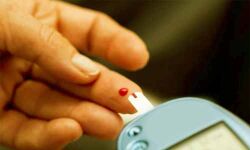- Home
- Medical news & Guidelines
- Anesthesiology
- Cardiology and CTVS
- Critical Care
- Dentistry
- Dermatology
- Diabetes and Endocrinology
- ENT
- Gastroenterology
- Medicine
- Nephrology
- Neurology
- Obstretics-Gynaecology
- Oncology
- Ophthalmology
- Orthopaedics
- Pediatrics-Neonatology
- Psychiatry
- Pulmonology
- Radiology
- Surgery
- Urology
- Laboratory Medicine
- Diet
- Nursing
- Paramedical
- Physiotherapy
- Health news
- Fact Check
- Bone Health Fact Check
- Brain Health Fact Check
- Cancer Related Fact Check
- Child Care Fact Check
- Dental and oral health fact check
- Diabetes and metabolic health fact check
- Diet and Nutrition Fact Check
- Eye and ENT Care Fact Check
- Fitness fact check
- Gut health fact check
- Heart health fact check
- Kidney health fact check
- Medical education fact check
- Men's health fact check
- Respiratory fact check
- Skin and hair care fact check
- Vaccine and Immunization fact check
- Women's health fact check
- AYUSH
- State News
- Andaman and Nicobar Islands
- Andhra Pradesh
- Arunachal Pradesh
- Assam
- Bihar
- Chandigarh
- Chattisgarh
- Dadra and Nagar Haveli
- Daman and Diu
- Delhi
- Goa
- Gujarat
- Haryana
- Himachal Pradesh
- Jammu & Kashmir
- Jharkhand
- Karnataka
- Kerala
- Ladakh
- Lakshadweep
- Madhya Pradesh
- Maharashtra
- Manipur
- Meghalaya
- Mizoram
- Nagaland
- Odisha
- Puducherry
- Punjab
- Rajasthan
- Sikkim
- Tamil Nadu
- Telangana
- Tripura
- Uttar Pradesh
- Uttrakhand
- West Bengal
- Medical Education
- Industry
Admission blood sugar levels may predict mortality in critically ill patients: Study

Germany: Abnormal blood sugar levels during admission may increase mortality risk in nontraumatic critically ill patients in the emergency department (ED), finds a recent study.
The results, published in The Journal of Emergency Medicine, show that the breakpoint for in-hospital mortality may be an admission blood glucose ≤ 100 and ≥ 272 mg/dL.
"Admission blood glucose is an inexpensive and rapidly available laboratory parameter that may predict mortality and help to identify critically ill patients at risk in a general nontraumatic critically ill ED patient cohort," wrote the authors.
Michael Bernhard, University Hospital of Düsseldorf, Heinrich-Heine University, Düsseldorf, Germany, and colleagues aimed to identify patients at higher risk and to evaluate the relationship between admission blood glucose levels and patient mortality during the management of nontraumatic critically ill patients in the ED.
For this purpose, the researchers performed a prospective, single-center observational study in a German university ED. It included all adult patients admitted to the resuscitation room of the ED between September 1, 2014, and August 31, 2015.
Directly after resuscitation room admission, blood samples for admission blood glucose were taken, and adult patients were divided into groups according to predefined cut-offs between the admission blood glucose. The study endpoint was in-hospital mortality.
During the study period, 532 patients were admitted to the resuscitation room. The data of 523 patients (98.3%) were available for analysis.
Key findings of the study include:
- The overall in-hospital mortality was 34.2%.
- In comparison with an in-hospital mortality of 25.2% at an admission blood glucose of 101–136 mg/dL (n = 107), admission blood glucose of ≤ 100 mg/dL (n = 25, odds ratio [OR] 6.30), 272–361 mg/dL (n = 63, OR 2.53), and ≥ 362 mg/dL (n = 44, OR 2.96) were associated with a higher mortality.
"Abnormal admission blood glucose is associated with a high in-hospital mortality," wrote the authors. "Admission blood glucose is an inexpensive and rapidly available laboratory parameter that may predict mortality and help to identify critically ill patients at risk in a general nontraumatic critically ill ED patient cohort."
"Our findings show that the breakpoint for in-hospital mortality may be an admission blood glucose ≤ 100 and ≥ 272 mg/dL." they concluded.
Reference:
The study titled, "Admission Blood Glucose in the Emergency Department is Associated with Increased In-Hospital Mortality in Nontraumatic Critically Ill Patients." is published in The Journal of Emergency Medicine.
DOI: https://www.jem-journal.com/article/S0736-4679(21)00384-X/fulltext
Dr Kamal Kant Kohli-MBBS, DTCD- a chest specialist with more than 30 years of practice and a flair for writing clinical articles, Dr Kamal Kant Kohli joined Medical Dialogues as a Chief Editor of Medical News. Besides writing articles, as an editor, he proofreads and verifies all the medical content published on Medical Dialogues including those coming from journals, studies,medical conferences,guidelines etc. Email: drkohli@medicaldialogues.in. Contact no. 011-43720751


